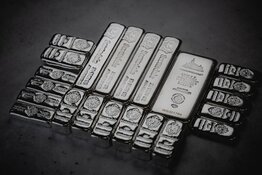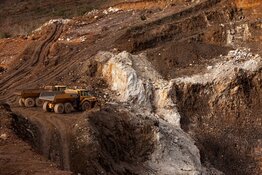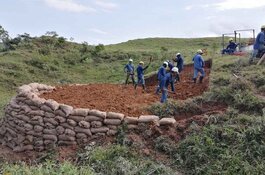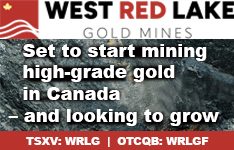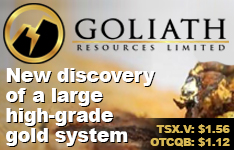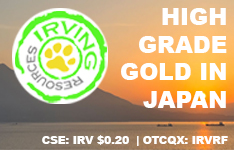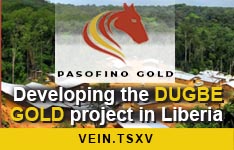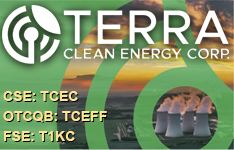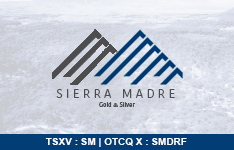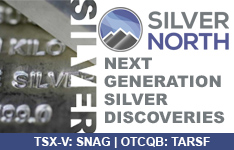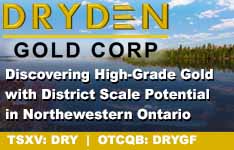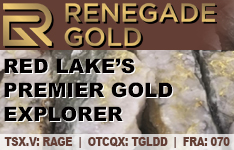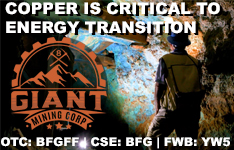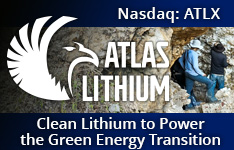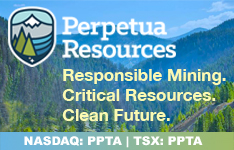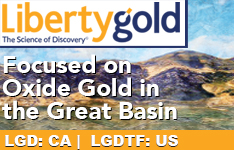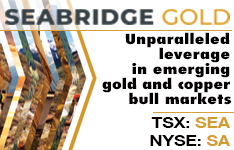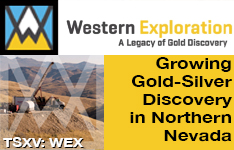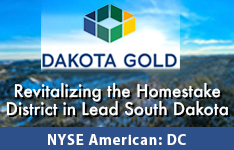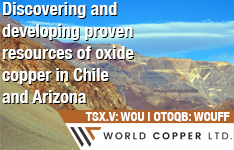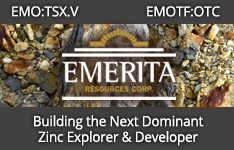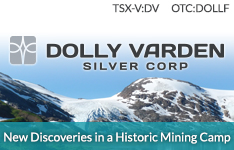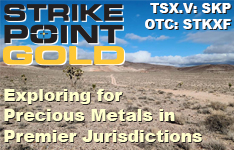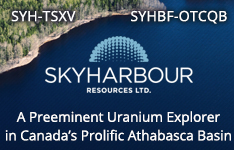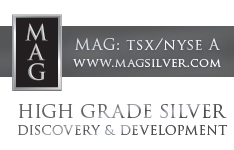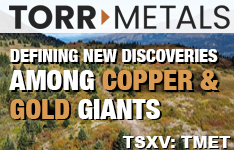Below is an interview by Rick Mills, the editor and publisher of Ahead of the Herd, with Bob Moriarty of 321 Gold and Quinton Hennigh, Geological Advisor at Crescat Capital.
Rick Mills: Quinton, describe your journey with Crescat Capital and their investment philosophy.
Quinton Hennigh: I've collaborated with Kevin and Tavi for approximately five or six years now. Kevin approached me in 2019, expressing interest in junior mining investments, particularly those with exploration potential. I recall steering him toward opportunities like Vizsla and Great Bear in their early discovery phases, which yielded substantial returns.
When COVID emerged in early 2020, Kevin successfully shorted the market and generated significant profits during that spring period. Subsequently, he established a precious metals fund at Crescat and invited me to help deploy capital. We invested roughly $80 million primarily in junior exploration ventures, which remains our core strategy.
This approach is increasingly uncommon in today's market landscape — we might be either the final representatives of a dying breed or pioneers of a new investment paradigm.
Promising Junior Mining Opportunities
Rick Mills: Bob and I started discussing undervalued stocks about three months ago when we anticipated the beginning of a gold bull market. One of our initial selections was Harvest Gold Corp. (HVG:TSX.V). Quinton, what attracted Crescat to this company?
Quinton Hennigh: There's some background context here. Initially, Harvest targeted a porphyry gold system in British Columbia, drilled a couple of holes without major success, then pivoted decisively to acquire projects in Quebec near the Windfall deposits in the same greenstone belt.
I provided input during their opportunity screening process, and this prospect showed promise. It essentially represents a mirror image of the Windfall deposit area, which Gold Fields recently acquired. Looking at the geological structure, the Mosseau property to the west appears to be an early-stage prospective version of the Windfall target.
While limited data existed initially, the team conducted systematic work. We supported their funding last summer to enhance their geophysical data, surface geochemistry, and other technical aspects. This information has positioned them with numerous drill targets they're preparing to test.
Is it guaranteed? No, but it's certainly an intriguing section of the greenstone belt with significant potential. I appreciate companies pursuing substantial targets.
Bob Moriarty: Since Quinton's here, I'll admit my selection approach. I examine Crescat's investments since they choose stocks based on sound technical reasons. When I identify something particularly undervalued that's passed Crescat's evaluation, I'm inclined to purchase and discuss it. Harvest Gold met these criteria and was remarkably inexpensive, making it an attractive investment that has performed well.
Rick Mills: Quinton, another stock Bob and I considered incredibly undervalued and invested in was Orestone Mining Corp. (ORS:TSX.V). David Hottman's team has experience with oxide deposits and a promising copper property, but I'm particularly drawn to their Francisca gold oxide project. What aspects appeal to you?
Quinton Hennigh: Let me provide some context about the property first. The Francisca project is situated in Argentina's Salta province. While Argentina was previously considered unfavorable for investment, the landscape has significantly improved.
I believe Argentina shows tremendous potential now, heading in a positive direction. The Salta province, which has been largely inaccessible for exploration, appears poised to open considerably. Areas that have been restricted often represent the most promising locations for major discoveries.
I recall discussing Francisca with someone roughly 10-15 years ago, noting its impressive oxide gold anomaly with extensive strike length. Importantly, it's positioned along a ridge crest with positive relief — essentially protruding from the ground, which enhances its attractiveness. Previous trenching across the property revealed quality grades, exceeding 1 gram per ton and even 3+ grams in one trench. Despite some historical drilling, it was incorrectly oriented and largely missed the trend, leaving this as essentially an untested gold anomaly.
Now we're in a position where Argentina's exploration environment has vastly improved, bringing this long-shelved target back into play. We invested when Orestone was trading at pennies, but they're gaining momentum as the market begins recognizing this exciting drill target.
Geologically, it features hornfels sedimentary rocks — essentially metamorphosed sedimentary formations suggesting a nearby intrusion. While I'm not certain how that element fits into the overall system, it exhibits characteristics of a substantial gold deposit. Additionally, being oxide material means it's metallurgically favorable for processing.
Rick Mills: Bob, we selected these companies primarily for their low valuation, yet they both offer compelling technical merit.
Bob Moriarty: Indeed, but an important aspect we haven't mentioned is how the junior resource market has struggled for years due to financing constraints. Orestone's primary challenge was financial, but they've recently completed a capital raise, securing funds to advance their Argentina project.
They now have the technical advantages Quinton described, the extreme undervaluation I look for, and sufficient treasury to execute their plans — that's a powerful combination.
Rick Mills: A winning formula indeed!
The Tombstone Gold Belt Opportunities
Rick Mills: Quinton, let's discuss Rackla Metals Inc. (RAK:TSX.V) and the Tombstone Gold Belt. This region appears to be developing into an area of significant interest with numerous companies operating there. Tell us about it.
Quinton Hennigh: The name Rackla actually derives from the Rackla Belt, which forms part of the Tombstone Belt. The company has existed for some time, but when Snowline made their major discovery at Valley, Simon Ridgway quickly recognized the potential for additional similar intrusions in the area. This really opened up Eastern Yukon, as most people had previously believed this deposit style wasn't present in that section of the belt.
People had focused on tungsten and similar minerals, but the gold discovery at Valley transformed everyone's perspective. Simon began acquiring land and testing several targets around 2022, though the initial targets weren't directly on outcropping mineralization but were based on geophysics and soil sampling.
Their new Grad project, scheduled for drilling this year, is undeniably an outcropping discovery. Their announcement from last season described finding this in a valley that remarkably had never been prospected before — it's extraordinary that in North America, we still have unexplored areas.
They discovered extensive outcropping mineralization — essentially a mountain about 400 meters from bottom to top with mineralization extending over 500 meters of strike length. Their chip-channel sampling of this granite intrusive rock with sheeted quartz veins returned over a gram of gold per ton across this distance. I can't recall anything comparable remaining in North America — it's truly remarkable to witness such a grassroots discovery.
Within that 500-meter zone, there was a section of about 160-180 meters with a significantly higher grade, around 3 g/t. This demonstrates the system can generate meaningful grades, which is crucial, as seen at Valley. It also shows impressive scale. Without diminishing Valley, which is an excellent deposit destined to become a great mine, the scale at Grad is enormous — you could potentially fit multiple Valley-sized deposits within the overall gold trend they've identified in this mountain range.
I'm so enthusiastic that I'm traveling to the Yukon in mid-July, expecting to visit the site around the 16th. They're scheduled to begin drilling in early July, so I'm hopeful we'll witness another reduced-intrusive discovery this year.
Rick Mills: The Tombstone Gold Belt hosts numerous RIGS (reduced intrusion-related gold systems), including operating mines like Fort Knox with 10 million ounces, Eagle's Nest and Olive in the Yukon, exceeding 4 million ounces, plus the former Brewery Creek mine. The area also features Snowline Gold Corp.'s (SGD:TSX.V; SNWGF:OTCQB) Valley Tier 1 discovery, Sitka Gold Corp.'s (SIG:TSXV; SITKF:OTCQB; 1RF:FSE) RC deposit, Banyan Gold Corp.'s (BYN:TSX.V) AurMac deposit, and Victoria Gold Corp.'s (VGCX:TSX; VITFF:OTCMKTS) Raven deposit — all substantial reduced intrusions.
These systems occur in clusters, with western and eastern groupings in the Yukon. Is there a geological distinction between these groups, or are they essentially the same? What separates the western and eastern zones?
Quinton Hennigh: Looking at research by prominent geologists like Craig Hart, who helped define the reduced intrusive gold model we use today, the formation process involves massive volumes of granitic melt developing deep in the Earth's crust. These bodies can span tens of miles, enormous volumes of molten rock, with smaller apophyses or fingers of melt rising from the main body and intruding into the overlying crust.
Some of these projections can carry substantial gold, creating these deposits. They typically form clusters because above one of these large magma bodies, you develop numerous protrusions — I've compared it to an upside-down cow's udder with multiple teats, which is a legitimate geological comparison. Each projection often contains gold, resulting in clustered deposits, as Craig Hart demonstrates convincingly in his research.
What you're highlighting is that we observe discrete areas, where Banyan Gold and Sitka operate probably represents one massive magmatic complex with multiple intrusions. Moving eastward, you encounter repeated groupings of these features. Even at Valley, I anticipate additional discoveries, as these rarely occur in isolation. That's why I consistently emphasize that the Yukon's Stikine Belt will likely prove to be one of North America's most prolific gold discovery regions over the next couple of decades, evolving into a major gold province.
Bob Moriarty: Let me interject with something we all recognize but haven't addressed. There's definitely a western and eastern division, but one crucial difference is accessibility — the western section has significantly better access than the eastern portion, making projects on the eastern side much more expensive to drill.
I must commend Scott Bergdahl at Snowline Gold for securing financing, aggressively drilling Valley, and developing an impressive deposit. Rackla is certainly benefiting from Snowline's achievements and finding it easier to raise capital because of Snowline's success. However, I believe the eastern half of the belt, which has been largely overlooked due to cost considerations, will yield the most significant surprises. The economics at $1,800 gold differ substantially from the economics at $3,500 gold.
Rick Mills: Let's discuss Sitka Gold Corp., another company in the Tombstone Belt with a RIGS deposit. What specifically attracts you to Sitka?
Quinton Hennigh: Sitka has made remarkable progress in recent years. They began drilling the RC project about three or four years ago with moderate results but relatively low grades. At Blackjack and Eiger, they established an initial resource of slightly over a million ounces, but at lower grades of 0.6-0.8 grams.
However, in late 2023, I noticed they started encountering higher grades, especially at the Blackjack target. This caught my attention because grade is the critical factor in these reduced intrusive systems. When you detect higher grades, you should pursue them diligently as they typically indicate where the majority of gold is concentrated within the system.
Look at Valley as an example — when Sitka began hitting higher grades, I realized this might be more than just a large, low-grade zone. That discovery of higher-grade material was the first pivotal development that interested me.
The second key moment occurred around mid-2024 when they acquired the remaining land in this area from Victoria, remarkably just before Victoria encountered difficulties. They secured the rest of this district, consolidating their property position, which potentially includes several more of these intrusive systems.
It's an extraordinary story still in its early stages. I'm pleased to see them executing 30,000 meters of drilling this year, which should provide initial insights into how many of these intrusions are significantly mineralized and the potential overall gold endowment.
I believe they've now exceeded 2 million ounces in indicated/inferred resources at Blackjack and Eiger, with grades improving to over a gram per ton in their combined resource. They're progressing well, expanding their resource and testing new targets this year. This should be the defining year when we see this project crystallize into a multi-million-ounce reduced intrusive gold system. Regarding ultimate size potential, I believe the property could reasonably host 10 million ounces, comparable to Snowline, albeit distributed across multiple deposits.
Bob Moriarty: Quinton, you should mention your influence here. When they were drilling in 2023 and 2024, they were conducting relatively shallow holes. We've discussed this extensively, and I know you strongly advocated for deeper drilling. When they implemented deeper drilling, they began achieving exceptional results, apparently changing their approach accordingly.
Their recent press release reported 211 meters at 1.13 grams, including 73 meters at 2 grams. At current prices, 2 grams of gold represents approximately $220 US per ton, which is highly economic in the Yukon. Furthermore, Sitka, Banyan, and Victoria all enjoy better access than Snowline and Rackla.
Rick Mills: Moving to Trifecta Gold Ltd. (TG:TSX.V:TRRFF:OTCQB), I appreciate your observations on the individual Tombstone stocks, but I'd like to quote your statement about Trifecta: "The Mt. Hinton property appears to host the central core of a large, well-zoned reduced intrusive mineralizing system. The world-class Keno Hill silver veins form a peripheral halo to this complex. Rye, although earlier stage, shows equally compelling promise for the discovery of an intrusive-hosted gold system. Broad gold-in-soil anomalism as well as recent discovery of sheeted quartz veining with associated multi-gram per tonne gold values make this target a high priority."
Does this single stock truly offer such extensive potential?
Quinton Hennigh: Mt. Hinton presents an interesting case. Following Craig Hart's model, it appears to contain the core of the Keno Hill District. There's an intrusion or strong geophysical evidence of one underlying the Mt. Hinton project. You observe quartz veins extending outward, transitioning into the high-grade silver-lead veins at Keno Hill, precisely the pattern you'd expect.
The key question regarding Mt. Hinton, in my view, is that not all reduced intrusions follow identical patterns. Has the gold in this system been preferentially concentrated in the veins? That's certainly possible. The veins are substantial with apparently good continuity, but whether it will resemble a Snowline-type target remains uncertain.
While geophysical evidence indicates an intrusion to test this year, it's not outcropping, so I won't definitively declare it a guaranteed major discovery. The veins themselves might actually represent the primary opportunity, potentially containing most of the gold in the system. Nevertheless, it's undeniably a large system, and considering the metal production from Keno Hill, there could indeed be a significant gold deposit there as well, justifying exploration.
The Rye project, located further east, is particularly interesting because of its proximity to Valley. Using the cluster theory I mentioned earlier, this could potentially share characteristics with Valley. It features sheeted quartz veining in outcrop, representing another outcropping discovery. While it has slightly distinctive chemistry with some tin content, it still displays the gold-bismuth-tellurium signature. I'm strongly encouraging the company to complete at least a few drill holes there by season's end.
I believe they're currently seeking permits. I've urged Richard to prioritize this permitting. With Valley, you may recall that in late 2021, they drilled three or four holes at season's end, reporting observations of sheeted quartz veining that initially generated little attention. However, when assays revealed 100+ meter intervals exceeding 1 gram, interest surged dramatically.
Once they returned in 2022 and began systematic drilling with major successes, everything changed. If they could achieve something similar at Rye — drilling three or four holes, demonstrating a viable system, generating excitement — they could return next year for a potentially significant discovery.
Rick Mills: With these intrusive deposits, is gold typically positioned above the intrusion, with silver located more peripherally?
Quinton Hennigh: That's correct. Silver would typically occur distal to the intrusion. However, as I mentioned, not all systems follow the standard model precisely. Some intrusions lack the pronounced lead-silver halo — Valley, for instance, hasn't yet shown evidence of this feature. It's a generalized model rather than a universal template.
Rick Mills: I was trying to clarify the distinction between the Valley discovery and Mt. Hinton. So some RIGS deposits have silver halos while others don't?
Quinton Hennigh: That's right. To date, no significant silver halo has been identified around Valley — not confirming its absence, but it's noticeably missing from current findings.
Silver47 and the Summa Merger
Rick Mills: Let's examine Red Mountain, Silver47 Exploration Corp.'s (AGA:TSX.V; AAGAF:OTCQB) flagship project, and the Summa Silver Corp. (SSVR:TSX.V; SSVRF:OTC) merger. I consider Red Mountain among the most fascinating projects I've encountered in my nearly 25 years in this industry.
Quinton Hennigh: It's certainly an exciting geological belt where they've established a district-scale position. This property previously belonged to White Rock Minerals. We invested substantially in White Rock partly because of Red Mountain, but also for their gold project. The Silver47 team focused exclusively on Red Mountain, bypassing the gold asset, as they're positioning themselves as a premier silver exploration company and viewed these VMS deposits as an excellent flagship opportunity.
These VMS systems are particularly interesting because while they contain some volcanic rock, as expected in volcanic massive sulfide deposits, they also feature considerable sedimentary material. They almost resemble SEDEX deposits in certain aspects. Though this might sound technical, it suggests potential large-scale mineralization — imagine an ancient Devonian basin filled with hot fluids depositing metals. Various indicators suggest this could become a significant district.
They have numerous targets, with Dry Creek and West Tundra Flats being the primary focus thus far, but probably a dozen additional drill targets they plan to test this year. They've started with an excellent resource at Dry Creek and West Tundra Flats — approximately 10-12 million tonnes of high-grade zinc-silver material — but they're likely to discover substantially more. If they identify several tens of millions of tonnes, which I consider entirely possible, it could parallel something like Greens Creek, a major, long-lived mine or resource supporting mining operations.
Regarding Summa's assets, they have Tonopah, which is interesting though I'm not especially enthusiastic about its somewhat narrow, irregular veins. However, their Mogollon project in New Mexico is compelling. I actually worked at Mogollon while prospecting for a major mining company nearly two decades ago, and I appreciate the district's potential.
When I was working there 20 years ago, there were community challenges with a small town in the area. A flood affected the town approximately 5-10 years ago, substantially reducing these social complications. While social considerations always exist, they're now better positioned to conduct exploration.
The company has responsibly initiated drilling operations. This represents one of the largest epithermal vein systems in the western United States, remarkably underexplored. While New Mexico might seem unusual, placing it in the broader context of deposits extending southward into Mexico, this represents a natural continuation of the epithermal belts from Mexico's Durango and Sonora regions into the United States — an enormous district with exceptional potential.
I appreciate that they can drill year-round, which complements Red Mountain's seasonal nature. Mogollon has demonstrated impressive results thus far, making the combination of these properties within one company a compelling investment narrative.
Rick Mills: The project is remarkable; I have a map showing the vein system outlined in red, essentially covering the entire property.
Quinton Hennigh: It's indeed striking, reminiscent of how Vizsla Copper Corp. (VCU:TSX; VCUFF:OTCMKTS) stood out when I first examined it in 2019 – the sheer abundance of veins was impressive. I spent several months sampling veins across this district and was consistently impressed by the gold and silver grades throughout the property. It represents a powerful, extensive epithermal vein system.
Rick Mills: They should maintain continuous drilling operations there. Bob, your thoughts?
Bob Moriarty: What's interesting is that Quinton and I have an extensive history with White Rock, and we're very familiar with the Alaska property. It currently contains an economically viable resource that will eventually become a mine, with significant potential for expansion. However, when COVID emerged, White Rock's management, being Australian, hadn't arranged drilling crews, which were in short supply. They consequently missed the 2020 drilling season entirely while focusing on two Australian gold projects.
Australia's regulatory changes regarding deposits effectively bankrupted White Rock, but Quinton and I both encouraged Silver47 to acquire the Alaska project, which I'm delighted they accomplished. As Quinton correctly noted, it's a seasonal operation with a three-month drilling window, followed by three months awaiting assay results, creating substantial price volatility.
I commend both Silver47 and Summa management for developing a mutually beneficial arrangement — a perfect example of a symbiotic relationship where the combined value exceeds the sum of its parts. Summa possesses excellent projects, Silver47 has two outstanding properties, including one in Canada currently delayed by regulatory issues, but this merger ensures year-round news flow. They offer investors exposure to silver-focused assets, which I believe will become increasingly valuable. The merger is exceptional, I respect the management teams on both sides, and I foresee a promising future. I've personally held shares since Silver47 acquired the Alaska properties.
Rick Mills: It was indeed a brilliant transaction. We conducted an in-depth discussion about it recently and agreed it represented a merger of equals that shareholders should view accordingly. The ability to operate year-round, generating continuous news flow which sustains junior mining companies, by alternating between northern and southern properties, is invaluable.
Talon Metals: A Nickel Discovery
Rick Mills: Let's conclude with one final company. Talon Metals Corp. (TLO:TSX) presents a nickel opportunity. What aspects of this nickel project captured your interest, Quinton?
Quinton Hennigh: Talon has an extensive history, holding a project in Michigan with an earn-in agreement with Rio Tinto Plc (RIO:NYSE; RIO:ASX; RIO:LSE; RTNTF:OTCMKTS), allowing them to reach 60% ownership, which I expect they'll achieve through completing their ongoing PFS study. They have an existing deposit with favorable characteristics.
It's a respectable deposit, but they've been advancing it during extremely challenging market conditions, resulting in significant dilution — the company has issued an extraordinary number of shares, similar to ASX-listed companies, approximately a billion, which is somewhat concerning. However, continued development has required these dilutive financings.
While advancing this decent deposit containing roughly 2% nickel with copper and PGEs, they began conducting more innovative testing. A recent video from the CEO and lead geologist, who is technically very competent, explains how they identified this target using electromagnetic methods.
They recognized an untested conductor below their existing deposit, which dips at approximately 30-40 degrees. As it projects downward, they detected another conductive body beneath it. They committed to drilling deeper and intersected a phenomenal interval — about 35 meters of extraordinarily high-grade copper and nickel, plus high-grade platinum and gold. I believe the combined platinum and gold content exceeds 20 grams per ton. The copper-nickel values alone surpass 20% in massive magmatic sulfide mineralization.
Such grades are exceptionally rare globally. Few deposits show comparable characteristics. The Eagle deposit, not far from Talon's project, represents one example. Eagle initially belonged to RTZ before Lundin acquired it (I'm uncertain of the current owner). While it's a high-grade operation, it's perceived as having limited tonnage and is approaching the end of its mine life.
However, this new discovery at Talon appears significantly higher-grade than their existing deposit and could represent the beginning of an entirely new discovery within a property that's already been extensively drilled.
To explain the formation process, these magmatic sulfide deposits don't develop through hydrothermal fluids like many ore deposits. Instead, they form from molten rock originating from mantle melting deep within the earth, carrying substantial nickel, copper, and precious metals like platinum and gold. When this melt encounters sulfur sources as it rises, the sulfur scavenges metals from the melt, creating an extremely metal-rich sulfide melt.
This process resembles extremely hot mercury — a dense, low-viscosity liquid that flows. As magma pushes upward, this sulfide melt settles out and flows in various directions, pooling in certain locations. At Talon, it appears the existing deposit projects downward, then shifts laterally to form a new sulfide pool below.
Interestingly, the grades are exceptionally high, significantly exceeding those in the traditional Talon orebody. This suggests they might be discovering a different sulfide source originating from depth. In my assessment, this likely indicates a much larger sulfide body below.
They've gathered additional geophysical data to guide their next drilling phase, expected to commence in July after raising substantial funding, approximately $24 million. For an exciting nickel story, I haven't encountered anything comparable since Voisey's Bay, and many geologists are comparing it to Norilsk, the world's largest magmatic nickel sulfide deposit. Its significance can't be overstated.
Rick Mills: That acquisition surprised everyone. Remarkable story, Quinton.
Quinton Hennigh: It's actually more impressive than that — it's approximately three times the grade of Voisey's Bay, substantially better.
Rick Mills: What about its potential size?
Quinton Hennigh: That remains unknown, which makes this exciting. If they've discovered a new sulfide pool that has flowed into a depression, the potential could be enormous. We'll need to watch their drilling program closely.
Final Picks and Market Outlook
Rick Mills: With our limited remaining time, I'd like to pose a challenging question. Quinton, if forced to select just one stock to monitor, which would you choose?
Quinton Hennigh: That's difficult! Let me frame this as: which company is most likely to deliver significant results in the shortest timeframe? While I appreciate all the companies we've discussed, considering near-term potential, I'd highlight Rackla since they're commencing drilling imminently, probably by early July.
If they achieve success similar to Snowline's experience in mid-2022, when they began drilling and immediately announced several hundred meters of sheeted quartz veins with visible gold, that could be transformative. Without guarantees, I'm hopeful Rackla will target the core of their prospect and achieve outstanding results. That would be my primary selection, though I don't want to diminish any of the others — they're all poised for positive developments in the coming months.
Rick Mills: If Rackla or any Tombstone operators successfully drill significant intercepts, the impact on the mining sector would be tremendous. Establishing this as an area play with multiple major RIGS discoveries would energize the entire junior resource sector — I appreciate your selection.
Bob, your thoughts?
Bob Moriarty: While I completely agree with Quinton regarding Rackla, I'll emphasize that we're still in the early stages of this new gold bull market. Numerous quality junior companies remain extraordinarily undervalued, trading at multi-year lows, and investors are recognizing gold as the final safe haven.
Despite the stock market reaching record highs and cryptocurrencies performing well, when the inevitable market correction occurs, investors will seek alternative investments. Junior resource stocks currently represent less than half a percent of total investment capital, leaving tremendous room for growth.
We've been identifying stocks trading at 2.5-3 cents over the past three months that subsequently doubled or tripled in value. This pattern will continue across the sector. While I technically agree with Quinton's selection based on geological factors, dozens of companies will likely demonstrate similar performance.
Rick Mills: Reuters recently reported that central banks have been acquiring gold at unprecedented rates, with 40% planning further increases over the next decade. They've purchased over 3,000 tonnes in the past three years, with analysts projecting another 1,000 tonnes added this year.
This trend is primarily driven by emerging market central banks diversifying away from U.S. dollar holdings. Statistics indicate that countries facing U.S. sanctions are particularly aggressive in reducing dollar exposure while increasing gold reserves, as sanctions increasingly function as a dollar-based policy enforcement mechanism, with Russia exemplifying this trend.
Bob Moriarty: I believe numerous central banks are purchasing gold as a safety measure amid declining confidence in U.S. Treasuries — a significant development. Additionally, the Japanese bond market is collapsing, which will eventually impact the U.S. bond market.
We're witnessing a flight to safety. While gold should theoretically be experiencing a correction, the current pullback has been minimal. I anticipate a temporary summer lull, but with stock markets at record highs, I expect a major crash by October.
Quinton Hennigh: While I won't predict a crash, I can reinforce Bob's observations. Recent events, particularly the Ukraine conflict and Russia's asset freezes, have taught valuable lessons to many nations about vulnerability to similar actions, affecting their perspective on holding U.S. Treasuries and dollars.
I also believe there's a deliberate effort within the United States to weaken the dollar, which has functioned as an economic "wrecking ball" in recent years. The demand for dollars, driven by global requirements to service dollar-denominated debt, has strengthened the currency. However, this has adversely affected the U.S. economy, necessitating dollar depreciation to enhance American export competitiveness.
Rick Mills: Last week, the European Central Bank reported that gold has surpassed the euro to become central banks' second-largest reserve asset, behind only the U.S. dollar.
CNBC also noted that ASEAN member nations are implementing regional plans to reduce dollar dependence by settling more trade in local currencies.
China has developed its own Cross-border Interbank Payment System (CIPS) and a yuan-based alternative to SWIFT for facilitating international transactions. They've added six foreign banks and are targeting Africa, the Middle East, and Central Asia with this system. Western sanctions have highlighted the risks of excessive dollar-based asset holdings, gradually eroding US dollar supremacy.
This suggests investors should reconsider their portfolio exposure. As central banks hedge against dollar exposure with gold, perhaps individual investors should consider similar strategies.
Bob Moriarty: I absolutely concur and would highlight platinum's performance, approaching $1,500 recently — a $500 increase over the past 60 days. My investment philosophy of purchasing undervalued assets and selling when overpriced remains valid. I believe platinum will eventually catch up to gold.
The United States' decision to sanction Russia and China, essentially confiscating $300 billion from Russia, has signaled to the global community that dollar-denominated instruments carry significant risk. This represents a form of self-sabotage regarding the dollar's global position.
China's development of an alternative SWIFT system wasn't proactive but reactive to U.S. actions. The United States has made several imprudent decisions recently that are now producing adverse consequences.
Quinton Hennigh: I'd add that beyond international reactions, there's a deliberate domestic effort to weaken the dollar, partly to enhance U.S. export competitiveness but also because a depreciated dollar facilitates debt repayment.
The recent dollar depreciation isn't primarily driven by foreign governments selling; much originates domestically. I wouldn't be surprised if this continues alongside potential implementation of Scott Bessent's proposals regarding a dollar standard reset, possibly including partial gold backing. Bessent has expressed support for gold, making some level of gold backing for the dollar conceivable in the foreseeable future.
Bob Moriarty: Interestingly, the BRICS nations appear to be considering gold as a fundamental component in a new reserve currency system.
Rick Mills: Their gold purchasing patterns certainly suggest this, and tariff-induced economic disruption is accelerating their concerns about dollar exposure.
As central banks continue accumulating gold, they're simultaneously reducing exposure to U.S. assets broadly. New York Fed custody data, reported in the Globe and Mail, shows a steady decline in Treasuries and other U.S. securities held by non-U.S. central banks. Recently, the value of U.S. Treasuries at the NY Fed on behalf of foreign central banks fell to $2.88 trillion — this year's lowest level.
Including mortgage-backed securities, agency debt, and other instruments, foreign central banks' total U.S. custody holdings dropped to $3.22 trillion, the lowest since 2017. This represents a global movement away from U.S. Treasuries, dollars, and other American assets. These developments suggest ominous economic patterns, wouldn't you agree, Bob?
Bob Moriarty: Absolutely. This could be characterized as the end of the empire, typically marked by incompetent leadership. Frankly, examining global leadership in the United States, Mexico, and elsewhere reveals notably poor decision-making.
I've long maintained that we're witnessing conflict between the West's debt-based system and the East/South's resource-based approach. Increasingly, the Western debt-based system appears to be in its final stages.
Trump's impulsive governance style is generating tremendous disruption. While some of his policies might prove beneficial, his unpredictability has created global instability rather than the stability markets require.
Rick Mills: Quinton, thank you for joining us today. Any closing thoughts?
Quinton Hennigh: For those interested in additional high-quality companies in Crescat's portfolio, I recommend watching our biweekly Friday videos, where we discuss these and other compelling investment opportunities.
Rick Mills: Thank you both for your insights.
| Want to be the first to know about interesting Critical Metals, Silver, Gold, Copper and Base Metals investment ideas? Sign up to receive the FREE Streetwise Reports' newsletter. | Subscribe |
Important Disclosures:
- Silver47 Exploration Corp. is a billboard sponsor of Streetwise Reports and pays SWR a monthly sponsorship fee between US$4,000 and US$5,000.
- As of the date of this article, officers and/or employees of Streetwise Reports LLC (including members of their household) own securities of Snowline Gold Corp. and Silver47 Exploration Corp.,
- Rick Mills: I, or members of my immediate household or family, own securities of: Harvest Gold and Orestone. My company has a financial relationship with: Harvest Gold, Orestone, and Silver47.. I determined which companies would be included in this article based on my research and understanding of the sector.
- Bob Moriarty: I, or members of my immediate household or family, own securities of: Harvest Gold, Orestone, Silver47, Rackla, Sitka, Trifecta, and Talon. My company has a financial relationship with: Harvest Gold Corp., Rackla Metals, Trifecta Gold, and Silver47. I determined which companies would be included in this article based on my research and understanding of the sector.
- Quinton Hennigh: I, or members of my immediate household or family, own securities of: Orestone, Silver47, Rackla, Sitka, Trifecta and Talon. I am an advisor to Crescat Capital, a US-based hedge fund that owns shares in Harvest Gold, Orestone, Silver47, Rackla, Sitka, Trifecta and Talon. I determined which companies would be included in this article based on my research and understanding of the sector.
- Statements and opinions expressed are the opinions of the author and not of Streetwise Reports, Street Smart, or their officers. The author is wholly responsible for the accuracy of the statements. Streetwise Reports was not paid by the author to publish or syndicate this article. Streetwise Reports requires contributing authors to disclose any shareholdings in, or economic relationships with, companies that they write about. Any disclosures from the author can be found below. Streetwise Reports relies upon the authors to accurately provide this information and Streetwise Reports has no means of verifying its accuracy.
- This article does not constitute investment advice and is not a solicitation for any investment. Streetwise Reports does not render general or specific investment advice and the information on Streetwise Reports should not be considered a recommendation to buy or sell any security. Each reader is encouraged to consult with his or her personal financial adviser and perform their own comprehensive investment research. By opening this page, each reader accepts and agrees to Streetwise Reports' terms of use and full legal disclaimer. Streetwise Reports does not endorse or recommend the business, products, services or securities of any company.
For additional disclosures, please click here.
Ahead of the Herd Disclosures
Ahead of the Herd newsletter, aheadoftheherd.com, hereafter known as AOTH.
Please read the entire Disclaimer carefully before you use this website or read the newsletter. If you do not agree to all the AOTH/Richard Mills Disclaimer, do not access/read this website/newsletter/article, or any of its pages. By reading/using this AOTH/Richard Mills website/newsletter/article, and whether you actually read this Disclaimer, you are deemed to have accepted it.


